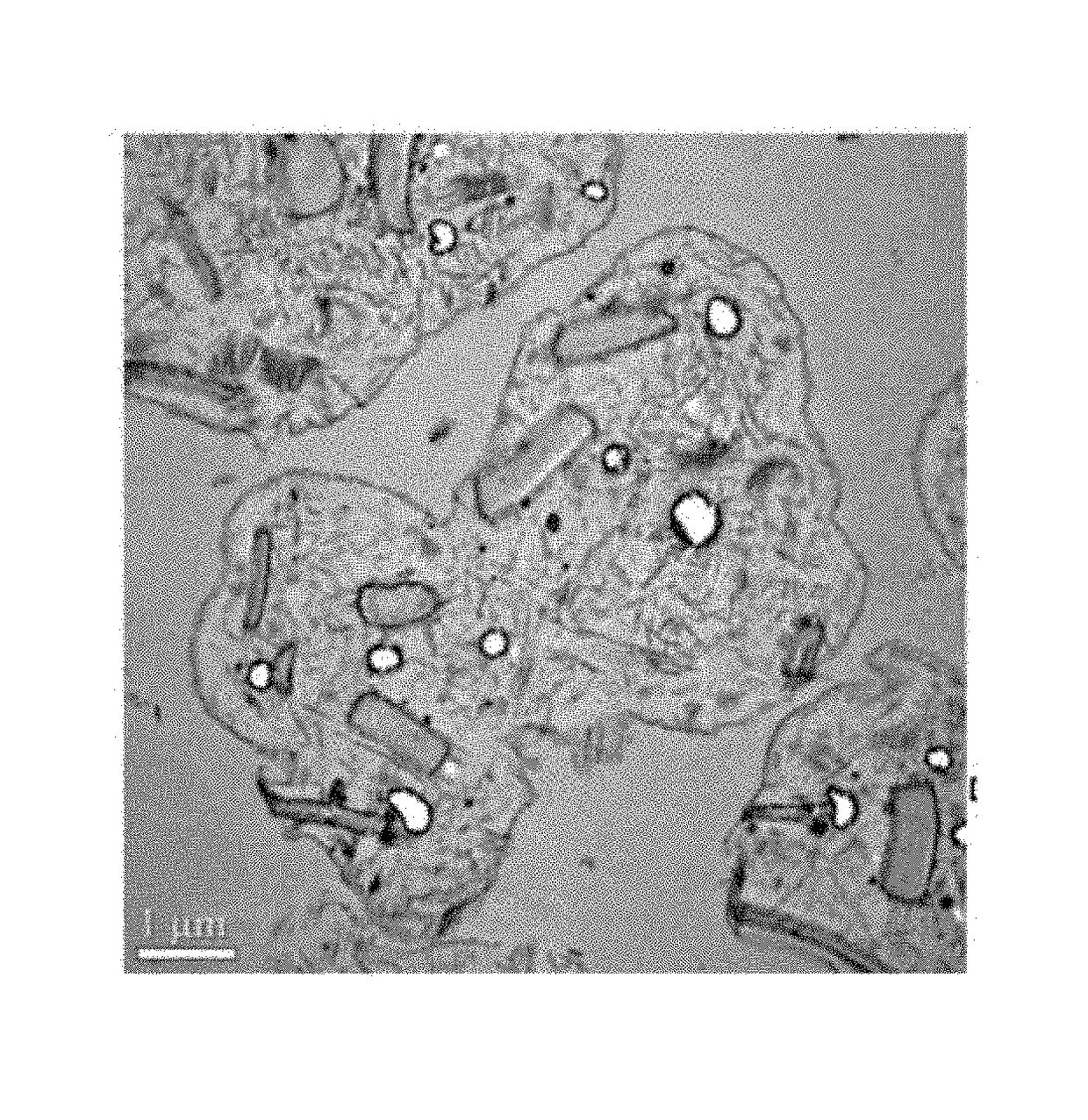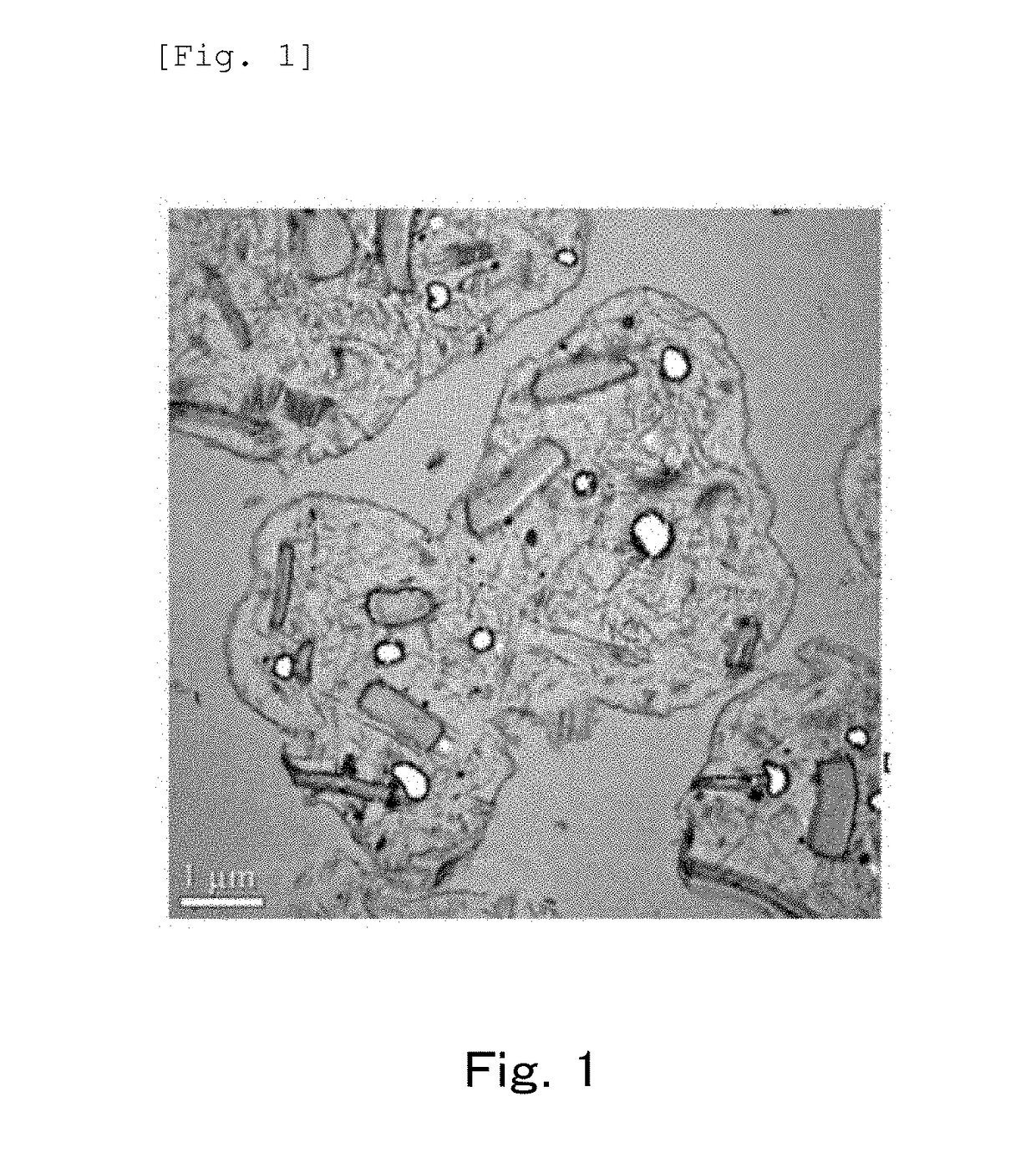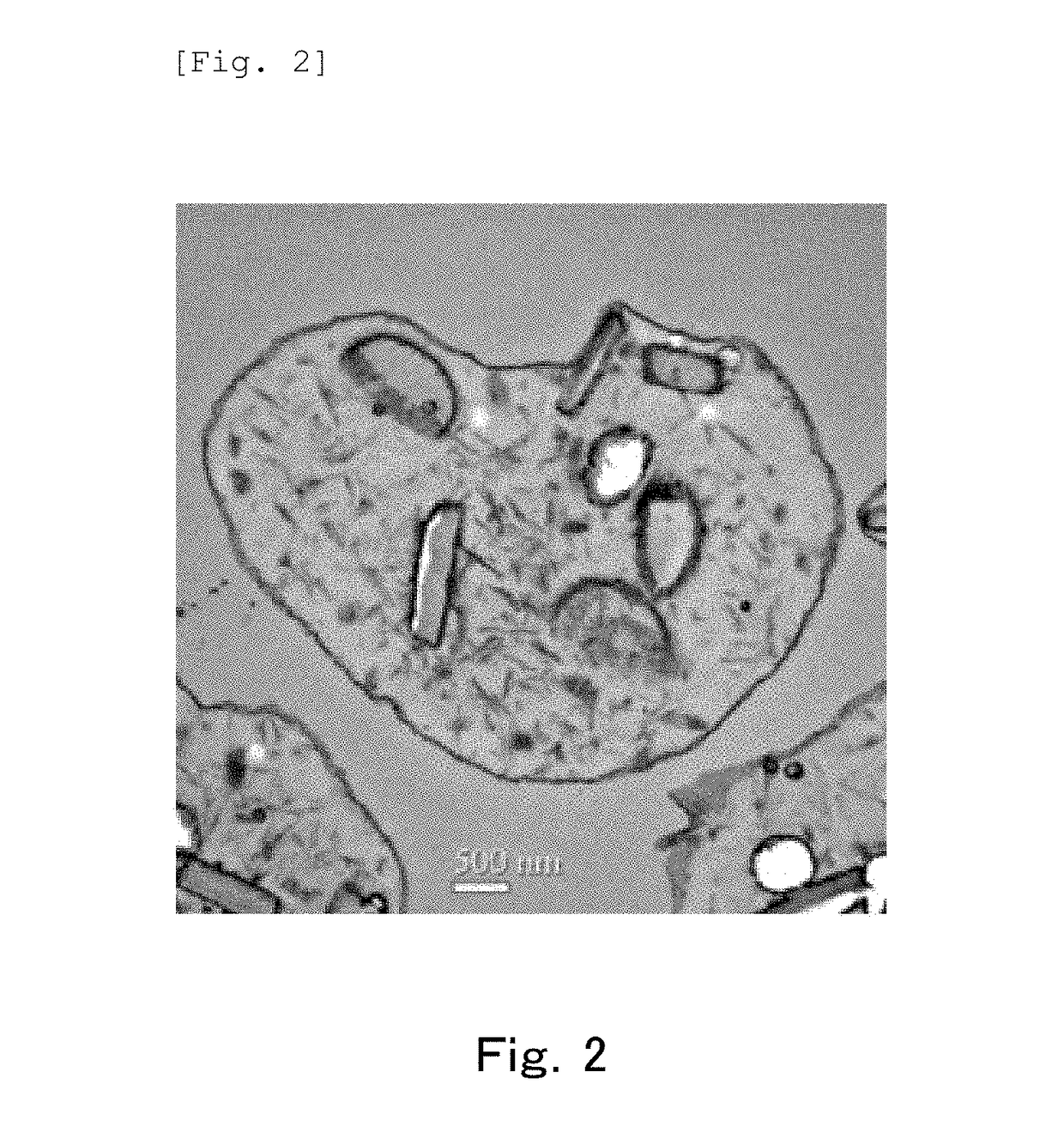Toner
a technology of toner and nmr, applied in the field of toner, can solve the problems of fusion of toner particles, and achieve the effect of high level of low-temperature fixability, storability and charging performan
- Summary
- Abstract
- Description
- Claims
- Application Information
AI Technical Summary
Benefits of technology
Problems solved by technology
Method used
Image
Examples
example 1
[0348]
Liquid dispersion of amorphous resin fine particles 1320 mass parts Liquid dispersion of crystalline resin fine particles 180 mass partsLiquid dispersion of colorant fine particles50 mass partsLiquid dispersion of release agent fine particles50 mass partsIon-exchange water400 mass parts
[0349]These materials were placed in a round-bottomed stainless-steel flask and mixed, after which an aqueous solution of 2 parts magnesium sulfate dissolved in 98 parts of ion-exchange water was added, and the mixture was dispersed for 10 minutes at 5000 rpm with a homogenizer (IKA Co. Ultra-Turrax T50).
[0350]This was then heated to 58° C. in a heating water bath with a stirring blade with the rotation controlled appropriately to agitate the mixture, and maintained at 58° C. for 1 hour to yield aggregate particles with a volume-average particle diameter of about 6.0 μm.
[0351]A solution of 20 mass parts of trisodium citrate dissolved in 380 parts of ion-exchange water was added to a liquid disp...
example 2
[0356]
Liquid dispersion of amorphous resin fine particles 2348 parts Liquid dispersion of crystalline resin fine particles 152 partsLiquid dispersion of colorant fine particles50 partsLiquid dispersion of release agent fine particles50 partsIon-exchange water400 parts
[0357]These materials were placed in a round-bottomed stainless-steel flask and mixed, after which an aqueous solution of 2 parts magnesium sulfate dissolved in 98 parts of ion-exchange water was added, and the mixture was dispersed for 10 minutes at 5000 rpm with a homogenizer (IKA Co. Ultra-Turrax T50).
[0358]This was then heated to 50° C. in a heating water bath using a stirring blade with the rotational frequency controlled appropriately to agitate the mixture, and maintained at 50° C. for 1 hour to yield aggregate particles with a volume-average particle diameter of about 5.8 μm.
[0359]A solution of 20 parts of trisodium citrate dissolved in 380 parts of ion-exchange water was added to a liquid dispersion containing...
example 3
[0362]
Polyester resin A80 partsCrystalline polyester resin A20 partsColorant (cyan pigment, Dainichiseika Pigment Blue 15:3) 5 partsRelease agent (HNP-51, melting point 78° C., NIPPON 5 partsSEIRO CO., LTD.)
[0363](HNP-51, melting point 78° C., NIPPON SEIRO CO., LTD.)
[0364]These raw materials were pre-mixed in a HENSCHEL MIXER, and then kneaded for 1 hour with a biaxial kneading extruder (PCM-30, Ikegai Kogyo) set to 130° C., 200 rpm.
[0365]The resulting kneaded product was cooled and coarsely pulverized with a cutter mill, and the resulting coarsely pulverized product was finely pulverized with a T-250 Turbo Mill (FREUND TURBO) and classified with a multi-grade classifier utilizing the Coanda effect to obtain toner particles with a volume-average particle diameter of 5.8 μm.
[0366]100 parts of the resulting toner particles were added to an aqueous solution of 10 parts of anionic surfactant (DKS Co., Ltd., Neogen RK) dissolved in 890 parts of ion-exchange water, and the mixture was exp...
PUM
| Property | Measurement | Unit |
|---|---|---|
| mol % | aaaaa | aaaaa |
| glass transition temperature | aaaaa | aaaaa |
| temperature | aaaaa | aaaaa |
Abstract
Description
Claims
Application Information
 Login to View More
Login to View More - R&D
- Intellectual Property
- Life Sciences
- Materials
- Tech Scout
- Unparalleled Data Quality
- Higher Quality Content
- 60% Fewer Hallucinations
Browse by: Latest US Patents, China's latest patents, Technical Efficacy Thesaurus, Application Domain, Technology Topic, Popular Technical Reports.
© 2025 PatSnap. All rights reserved.Legal|Privacy policy|Modern Slavery Act Transparency Statement|Sitemap|About US| Contact US: help@patsnap.com



